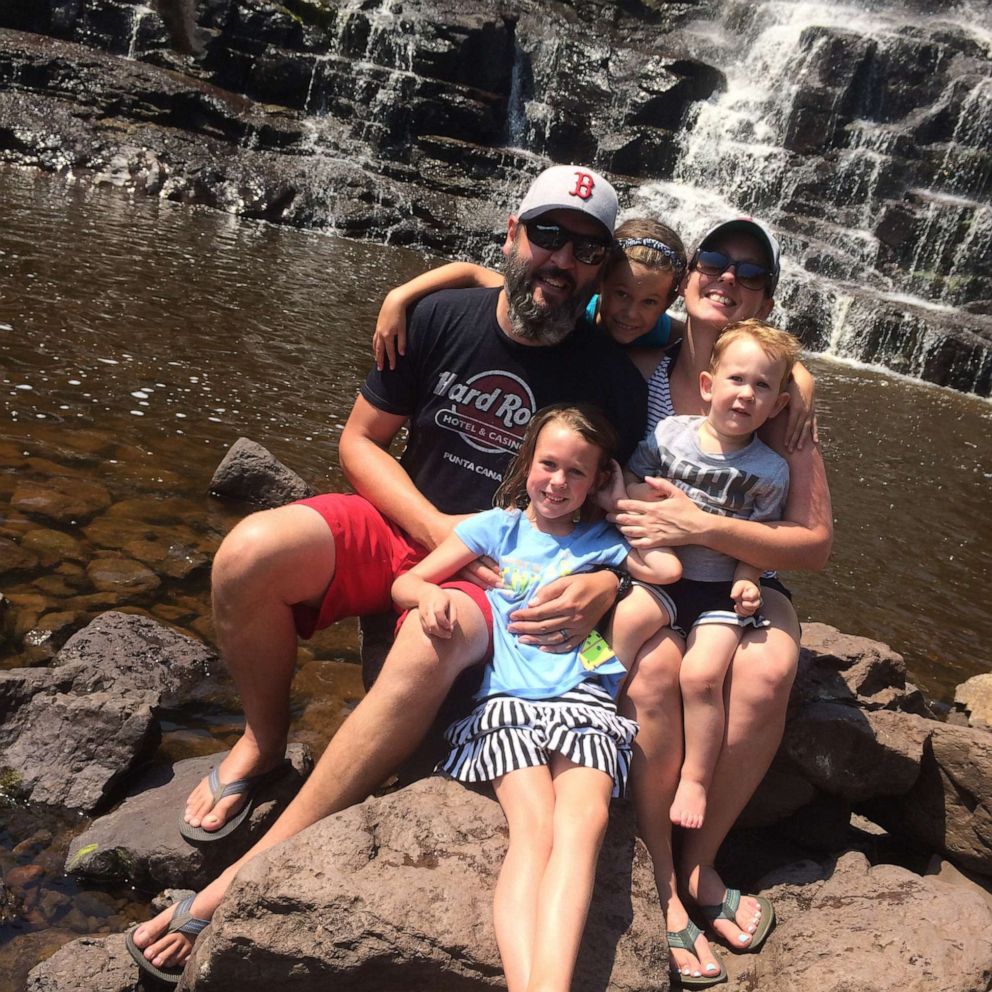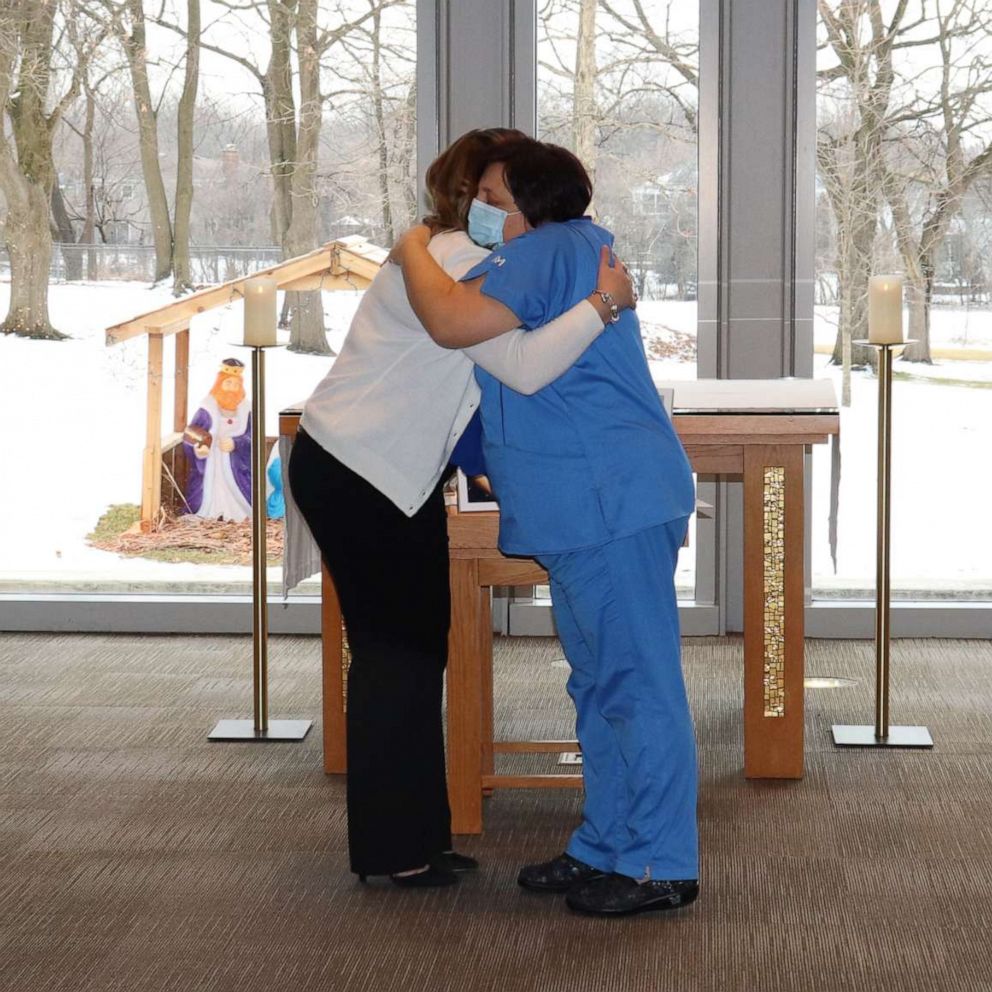Hospice nurse's frank conversations on dying go viral
Julie McFadden shares frank discussions on death with over 1 million followers.
Death is something everyone experiences but few people want to talk about.
One nurse is trying to break that stigma, taking to TikTok to talk frankly about death, from what a person feels while dying to how loved ones can best support a person in their final days.
"The death rattle is the most normal thing and to be expected at the end of life, however if you're not used to hearing it, it feels like the scariest thing you've ever heard," Julie McFadden, known as @hospicenursejulie on TikTok, says in one video with nearly 2 million views.
McFadden, a California-based hospice nurse and online educator, goes onto explain in the video how the so-called "death rattle" is a normal process caused by a buildup of saliva in the mouth.
"I always thought my mum was choking when she died. I finally now believe she was not in pain. Thank u," one person commented on the video.
"I wish I could've seen/heard this before I experienced this with my dads passing," wrote another commenter.
Those types of conversations that make people less afraid of death or what their loved ones are going through are why McFadden started her TikTok account, she told "Good Morning America."
"I knew I wanted to talk to people about death and dying, just because people around me were saying, 'You need to tell people the stuff that you're telling us,'" McFadden said, adding that her first-ever video focused on describing what the last six months are typically like for a person on hospice care.
Hospice care is care that begins when a patient is not responding to medical treatments to cure or slow the progress of the condition they're experiencing, according to the National Institute on Aging, a division of the National Institutes of Health.
The support provided by McFadden and other hospice nurses is meant to focus on the "care, comfort, and quality of life of a person with a serious illness who is approaching the end of life," according to the NIA.
McFadden said one of the biggest misconceptions about her job is that it's full of sadness.
"It's not as depressing as people think because it truly feels like you're really, really helping people, and then seeing loved ones help their loved one during one of the most difficult times in their lives is inspiring, and it feels like an honor," she said. "Just to witness the love on a daily basis is truly life-changing. It's not depressing."
Another misconception McFadden said she has learned through her career is that death is "not the worst possible thing." Prior to becoming a hospice nurse, McFadden said she worked as a nurse in an intensive care unit, or ICU.
"What I've learned in hospice nursing and in ICU nursing is that death is not the worst possible thing. I think suffering is far worse," she said. "It has changed my life, me getting to witness so much love I see while my patients are on hospice."
Some of McFadden's most viral videos on TikTok have focused on topics ranging from the visions people see while they're dying to the phenomenon known as the "death stare" to spontaneous movements people make on their deathbed -- like reaching out to hug someone -- to whether or not people starve as they are dying.
In one video, McFadden explains what she says to patients who tell her they are afraid to die, saying, "No. 1, I never try to make it better or make them not afraid."
In another video, McFadden says she recommends that people think ahead about how they want to die.
"Because if you know how you want to die, it will help you decide, with the time you have left, how you want to live," McFadden says in the video. "It's not over until it's over. You're not dead yet."

McFadden told "GMA" the most common question she gets from her followers is whether their loved ones suffered while they were dying.
McFadden said while she doesn't know each person's circumstance, she knows that many of the things that appear as suffering in a person's final days are completely normal. She said she tries to explain to people that human bodies are, "built to live and they're built to die."
"I think there's a lot of grief and trauma around death and dying because people just don't understand what's happening," she said. "But [much] of what people describe is just what end of life looks like."
McFadden continued, "What makes me feel so happy about this page [on TikTok] is being able to educate people that, most likely, your loved one was not suffering ... it's a biological response to the body dying."
McFadden added that by talking about death, she hopes to reframe the conversation around hospice care to focus on how it helps a person live out their life in the way they want and with support and care.
She said she also hopes that her talking about death will simply encourage more people to ask questions and have open conversations.
"What I've found is even people who are willing to talk about [death], even in a way of, 'I'm afraid. I don't want to. I don't want to think about this,' there's something about even just saying that out loud that will loosen the fear that's gripped around the topic," she said. "I think we need to start reframing how we look at death and dying, because it's going to happen to all of us."







